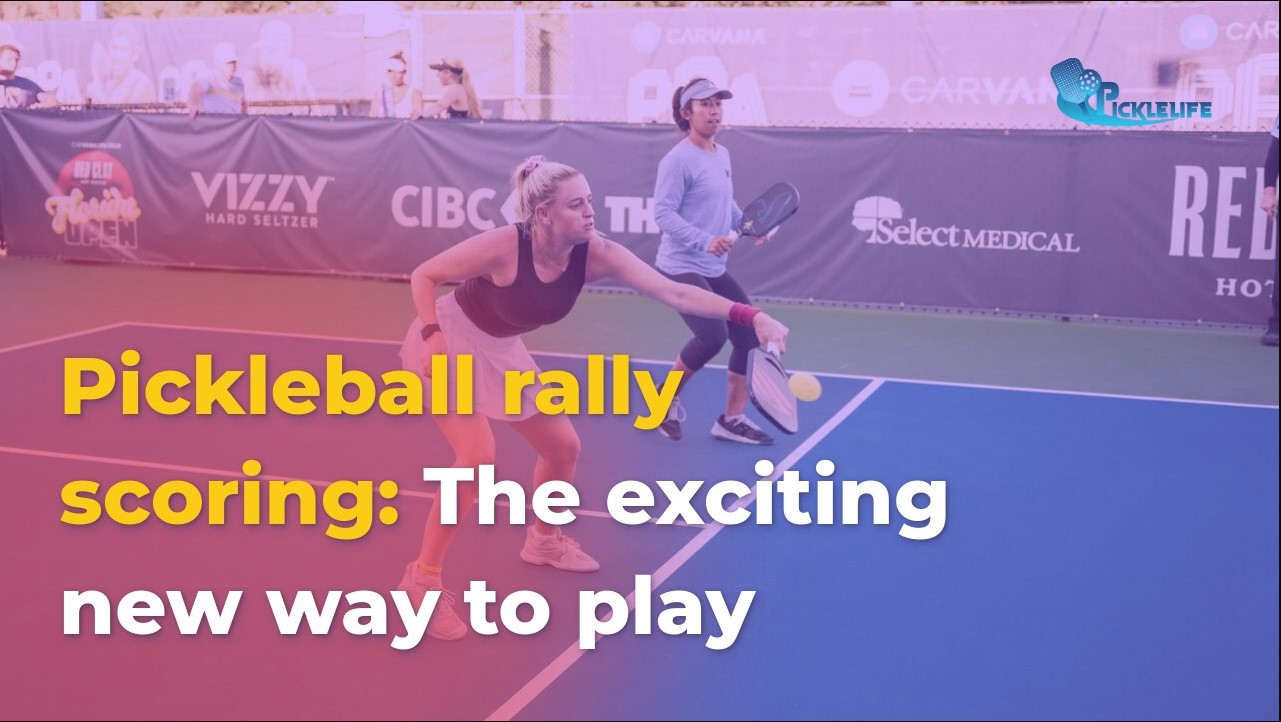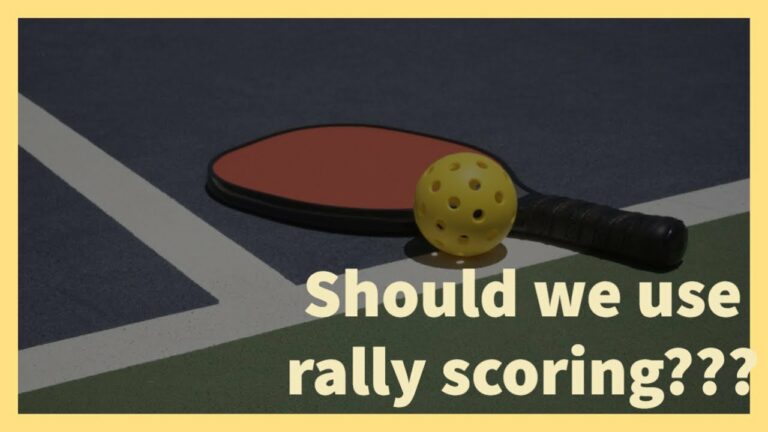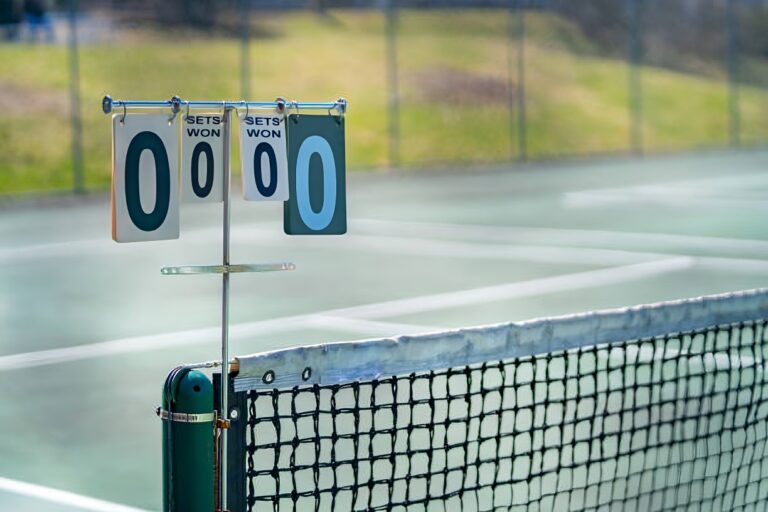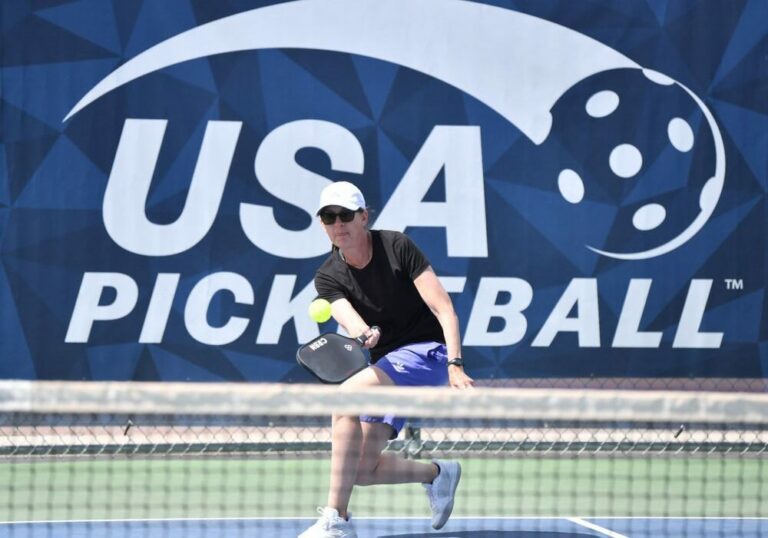Pickleball rally scoring: The exciting new way to play
Pickleball has emerged as one of the fastest-growing sports in the world, captivating players of all ages and skill levels. A significant part of its appeal is its unique scoring system, which enhances both the gameplay and the viewing experience. Pickleball rally scoring, a concept that allows both teams to score points during each rally, makes games more intense and accessible, particularly for beginners. The following sections delve deeper into this captivating scoring method, explaining its mechanics, popularity, and impact on the overall experience of playing pickleball.

What is pickleball rally scoring?
Rally scoring is a fundamental change in how points are awarded in pickleball. Unlike traditional scoring systems, such as side-out scoring, where only the serving team can earn points, rally scoring ensures that any team can score, regardless of whether they are serving. This method creates a faster-paced and more exciting atmosphere, as each team has the opportunity to score points at every exchange.
A simple explanation for beginners
At its core, a rally in pickleball ends when a fault occurs. Faults may include hitting the ball out of bounds, failing to clear the net, or stepping into the non-volley zone and hitting the ball. When a rally concludes, the team that wins it gets to score a point. This competitive framework not only enhances the intensity of the match but also brings in an element of suspense and unpredictability.
To help you visualize the key differences between rally scoring and traditional scoring, see the table below:
| Aspect | Rally Scoring | Side-Out Scoring |
|---|---|---|
| Points Scored | Yes, by both teams | Only by the serving team |
| Speed of Play | Faster, more dynamic | Slower, more methodical |
| Ease for Beginners | More accessible | Can be confusing |
| Strategy and Game Flow | High variability and excitement | More predictable |
side-out scoring derives its name from the fact that a point can only be scored by the serving team. In contrast, rally scoring signifies a shift in the dynamic of the game, making it suitable for both casual players and serious competitors alike.

How does rally scoring work in pickleball?
Understanding how rally scoring functions is key to fully appreciating the nuances of the game. The mechanics of this scoring method are designed to streamline play and enhance competitiveness.
Step-by-step guide to rally scoring
In a rally scoring game, each rally can culminate in a point. If the serving team wins the rally, they continue to serve for the next point. If the receiving team wins, they earn the point and then take over the serve. A crucial part of this system is the rotation of players serving based on their scores: if the score is even, the player on the right side of their court serves; if odd, the player on the left serves.
To illustrate further, consider the following example scenario:
- Score is 4-3: The right-side player from the serving team serves. They win the rally, making it 5-3.
- Score is now 5-3: The left-side player serves next. If the serving team wins this rally, the score will be 6-3. If the receiving team wins, they earn a point and switch serve.
This sequence maintains excitement and unpredictability.
Understanding the “freeze” in rally scoring
An intriguing aspect of rally scoring is the concept of the “freeze,” which occurs when one team reaches 20 points. This rule stops the game and allows the trailing team a chance to catch up without losing momentum. The trailing team’s ability to score on each rally adds a level of drama and the hands of fate shifting as the leading team tries to maintain its advantage. The “freeze” ultimately generates nail-biting scenarios where every strike of the paddle could mean victory or defeat.

Why is rally scoring popular in pickleball?
The allure of rally scoring is indisputable, but why has it gained such traction among players, especially those new to the game? Its unique attributes contribute not only to the way the game is played but also to how it appeals to a broader audience.
Benefits of rally scoring for beginners
Rally scoring proves particularly beneficial for beginners for several reasons:
- Easily understandable rules: New players find it less intimidating as they can score points regardless of which side is serving, thus creating a more welcoming environment.
- Faster gameplay: Matches are generally shorter. Players engage more frequently, which leads to more playing time and less downtime.
- Reduced pressure on serving: Beginners often feel anxious about serving; with rally scoring, this pressure diminishes, promoting a more enjoyable experience.
With these attributes, rally scoring is revolutionizing how new players perceive the game, making it not only fun but also encouraging players to continue honing their skills.
The impact of Major League Pickleball (MLP)
The rise of Major League Pickleball and its adoption of rally scoring has dramatically altered the game’s landscape. The MLP’s format is engineered for fast-paced, entertaining matches that capture viewer interest and showcase the intensity of rally scoring. Results indicate that this change has led to increased viewership, allowing professional pickleball to reach previously untapped audiences.
In the realm of sports, rapid-fire action is vital to grabbing attention, and the adoption of this scoring method by professional leagues helps elevate pickleball’s status as a spectator sport. The carefully curated environment fosters excitement, strategy, and endurance, inviting fans into the passion of competitive play.

Strategies for winning with rally scoring
While rally scoring may seem elementary at first glance, a certain level of strategy and emphasis on technique can significantly impact performance. Understanding effective tactics can bolster your success in this electrifying format.
Essential tips for beginner players
For beginners eager to excel, focusing on a few critical strategies can prove beneficial:
- Consistency is key: Each point counts, so minimizing unforced errors is crucial. Practicing serves and returns can elevate reliability during gameplay.
- Using deep serves and returns: This tactic controls the court, making it difficult for opponents to execute strategic plays.
- Dinking and volleying: Mastering both techniques will enhance your ability to win rallies and keep your opponents on their toes.
- Maintaining mental focus: Just as essential as physical skill, mental resilience can determine who thrives in high-pressure situations, especially during crucial rallies.
By integrating these tips, beginners can not only improve their gameplay but also maximize their enjoyment of the sport.
Addressing common concerns about rally scoring
Even with its many advantages, some players express concerns regarding the nature of rally scoring, questioning its strategic depth compared to traditional systems.
Is rally scoring less strategic?
One prevalent myth is that rally scoring diminishes the strategic elements of pickleball. In reality, it encourages players to think critically about shot selection and placement. With every point available to both teams, the importance of tactics magnifies. Players must anticipate their opponents’ moves, counteract their strategies, and remain adaptable.
In fact, the drive to win points regardless of who is serving leads to heightened focus and more robust decision-making. This aspect can add layers of complexity to the game, pushing players to elevate their skills continually.
The future of rally scoring in pickleball
As rally scoring continues to gain traction, organizations such as the USA Pickleball Association (USAPA) are actively reviewing its effectiveness. There is potential for wider adoption, indicating a significant shift in how the game may evolve in the coming years. The appeal of this scoring method could play a pivotal role in attracting new players and expanding the sport’s reach.
As pickleball enters this transformative era, the implementation of rally scoring may redefine its nature as both a recreational pursuit and competitive sport. As engagement increases, the possibilities for innovation and growth become truly limitless.
Give rally scoring a try!
If you’ve been intrigued by rally scoring’s promises of excitement and accessibility, now is the perfect time to give it a shot. Finding local pickleball matches utilizing this scoring system can open new avenues for growth, fun, and community connection.
Find rally scoring games near you
To locate pickleball clubs or communities that embrace rally scoring, consider utilizing resources like:
- Local sports clubs
- Social media groups for pickleball enthusiasts
- Online platforms dedicated to sports and recreation activities in your area
Have fun and enjoy the fast-paced action!
Overall, the transition to rally scoring presents an exhilarating way to enjoy pickleball. Whether you’re picking up a paddle for the first time or aiming to refine your competitive strategies, the engaging nature of this scoring system promises fast-paced action, increased camaraderie, and unforgettable moments on the court. Dive into this exciting format and discover the thrill of every rally!
